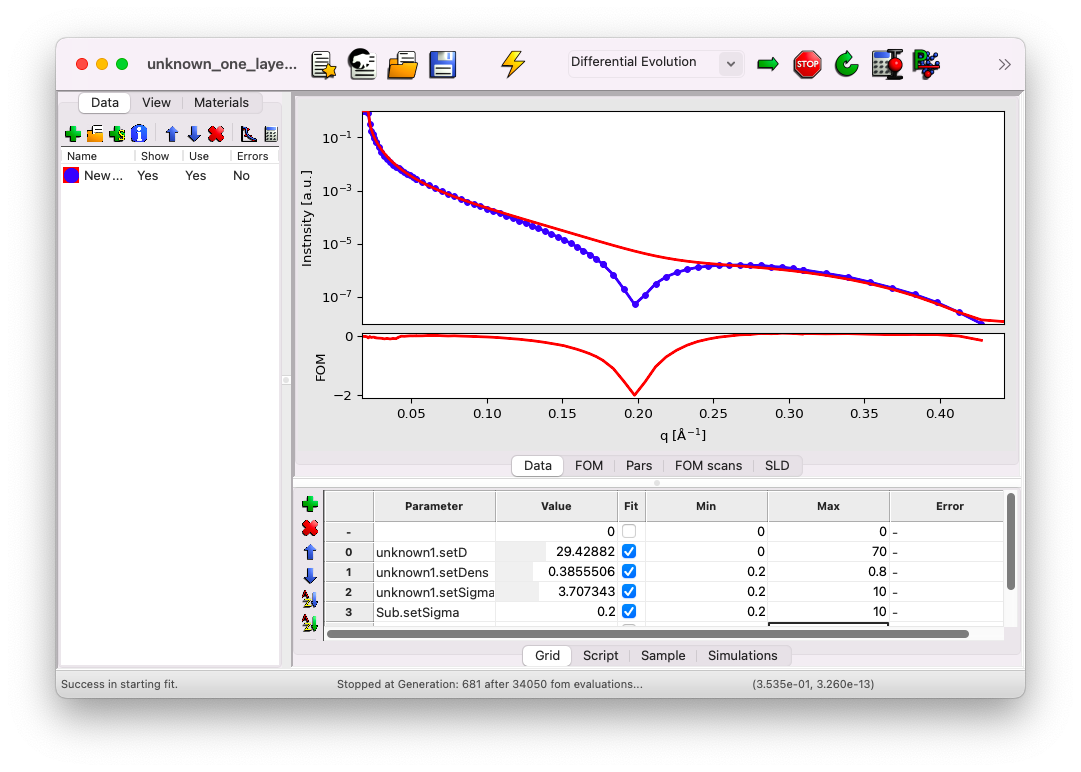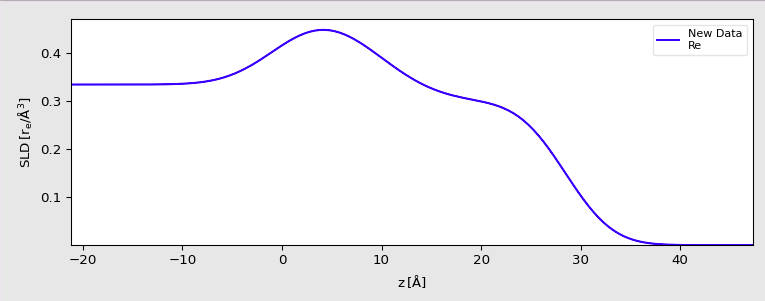Unknown model: where to start?#
This section outlines an approach you can take when you have only a vague idea of the structure being analyzed. It’s important to emphasize that interpreting XRR results requires caution, as an XRR curve can be well-fitted by very different models.
The starting point will be the same data as used in the previous section: a monolayer of DPPS at the air-water interface. The data file can be downloaded here (right-click > Save link as). We will use a simple GenX file where the data has already been imported, available here. If you’re unsure how to implement parameters in GenX to build a model for your sample, refer to the previous sections.
Start with one layer#
To begin, we’ll see if a single layer is sufficient to describe the data. Add a stack, and within it, create a layer named unknown1.
Sample parameters#
Thickness (\(d\))#
Start by assigning any initial value for the layer thickness. Here, we use \(d=5\) \(\rm{A}\). Make this a fit parameter.
Formula (\(f\))#
We use a convenient trick to work directly with electron densities (\(\rm{e}^{-}/\rm{A}^3\)): specify only a Hydrogen atom for the formula by setting f=fp.H.
Density (\(\rm{dens}\))#
Begin with the density of water, \(\rho_{el} = 0.334\) \(\rm{e}^{-}/\rm{A}^3\). Set dens=0.334 and make it a fit parameter.
Roughness (\(\rm{\sigma}\))#
Start with \({\rm \sigma} = 3\) \(\rm A\). Make this a fit parameter.
Roughness of the Subphase#
Retain the value \({\rm \sigma} = 3\) \(\rm A\) for the subphase and make it a fit parameter as well.
After setting up the single-layer model, your sample view should look like this:

Adjust the fit range#
Set the fitting range for each parameter to a very large range, then start the fit.

Fit result#
As shown below, the model cannot adequately fit the data. This indicates that a single layer is insufficient to describe the sample.

Add a second layer#
Sample parameters & fit range#
Introduce a second layer, using the same parameters as the first layer. Be sure to adjust the fitting range appropriately.


Fit result#
After performing the fit, you will observe a significantly improved match between the model and the data. This demonstrates that a two-layer model is sufficient to describe your sample.


Warning#
Compare these results with those obtained in the previous section using the same original dataset. While the results are close, they are not identical.
It is crucial to remember that, in extreme cases, two very different models can provide a perfect fit to the same data. This highlights the importance of complementing XRR with other techniques to identify the best model accurately.
If you’ve missed any steps, you can download the updated file here.
